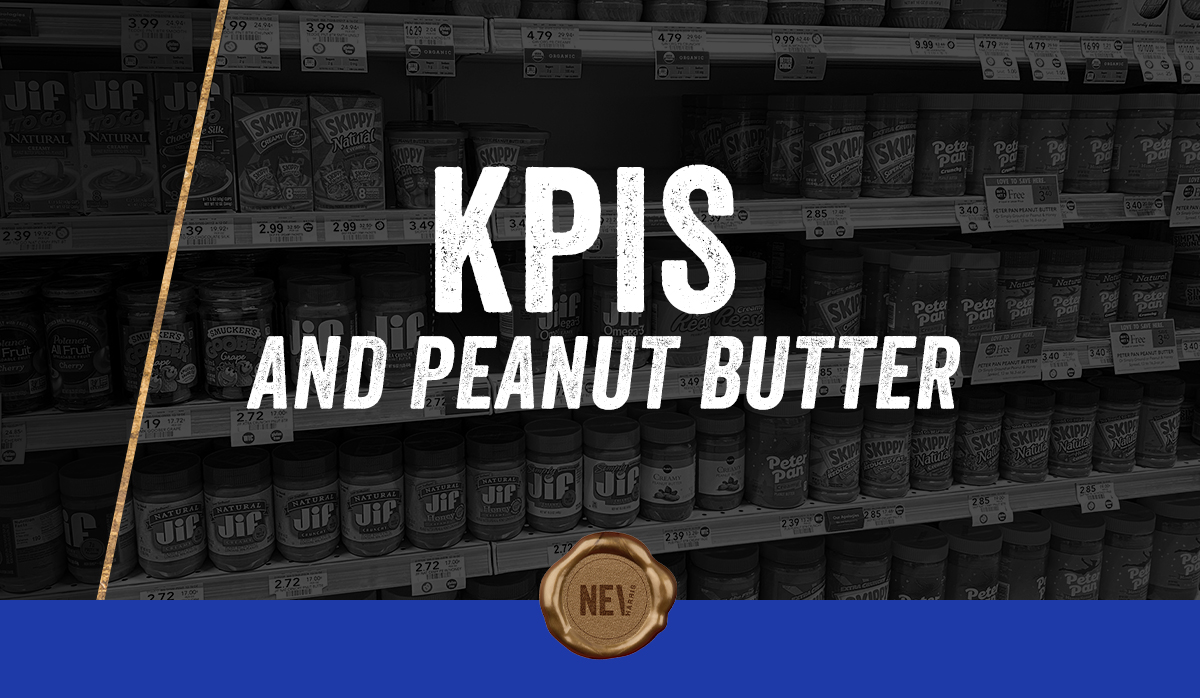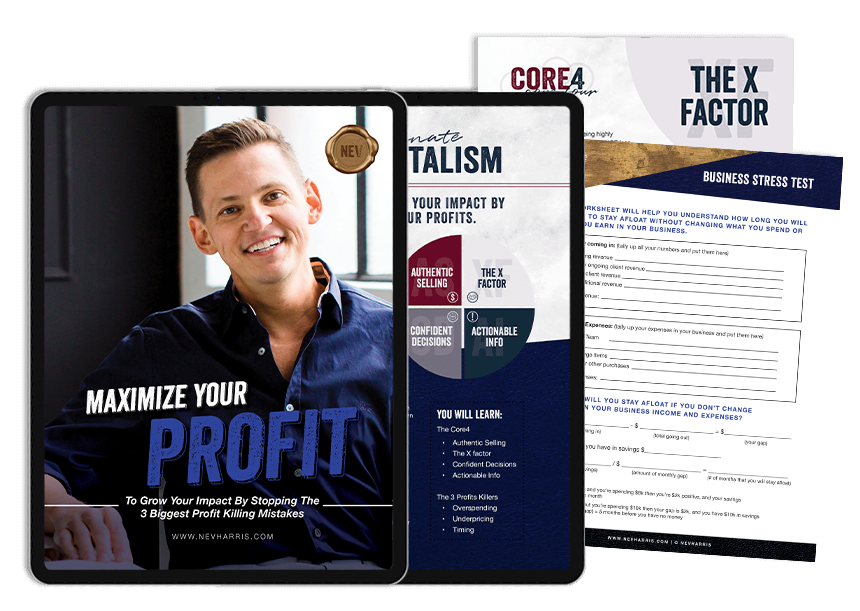KPIs and Peanut Butter


Today we’re gonna have a heart-to-heart chat about peanut butter and your finances.
Bear with me, here.
For those of you who are new to the blog, I’m Nev, and I’m a red-blooded American. This means that I’ve sworn my undying loyalty to peanut butter. (I don’t make the rules, I just follow them.) Peanut butter is the creamy, swirly goodness that greases the wheels of my day.
I consider myself a pretty healthy guy, right? I go to the gym a couple of times a week. I eat decently. I stretch. I try not to go overboard with the cocktails.

And I try—well, I tried—to eat natural peanut butter.
But I’ve got to say, that shit’s nasty. And even more than that, it’s inoperable.
Why? Because natural peanut butter comes completely separated into its two different, barely mixable components of pulverized peanuts and oil.
Before I can even think about making a sandwich with natural peanut butter when I come back from the gym, I’m doing a second arm workout, trying to combine the contents of the jar. Then I’ve got to somehow remove the mixture from said jar and spread it onto my bread. Last but not least, I’ve got to pretend to enjoy it.
Why would you take two wholly good and nutritionally important items and, in an effort to make them better, actually make more work for yourself?
You wouldn’t, and you shouldn’t.
What’s worse is that, in the process of trying to create a supposedly ideal product, you’ve actually taken out many of the characteristics that made you fall in love with the original product in the first place.
Now you’ve gone and ruined smooth, deliciously-spreadable peanut butter. You monster.
Okay, Nev, where are you going with this?
Now, before you convince yourself that Ol’ Nev’s finally lost it, hear me out.
The concept of dealing with natural peanut butter is like dealing with your agency’s financial data coming from a million different sources.
You’ve got numbers, lists, and tables that you’re trying to condense into a processed (or, at least, processable) set of data. In the midst of all of this chaos, you’re trying to make sense of what’s important right now. You’ve got to do this so that you can make effective, informed decisions about your agency’s next financial moves.
Your efforts are noble, yet as you keep trying in vain to combine and condense information, certain details keep shifting to the top of your mental (or physical) pile, and they’re not necessarily the most important.
Efficient? No.
Pleasant? No.
Greasy? Maybe, a little.
That’s why I’m suggesting for you to look into KPIs today.

The KPI—key performance indicator— is a multi-benefit tool. To start, you have a clear and optimized view of your agency’s present day financial performance that’s tangible and actionable.
In the peanut butter world, this is similar to the very agreeable, uncomplicated nutrition labels telling you that your peanut butter contains peanuts, peanut oil, salt, and sugar. You know what’s going in, and you know what to do with it.
When you choose to go the traditional route (both in terms of your finances and your good ol’ PB), you’re going to get a lot of information that is hard to pronounce and even harder to digest.
A KPI can help you consolidate all of the important data and metrics you’re going to need to get a sense of how your agency is doing, without the excess volume. It’s all stored and combined in one place, ready to be applied as liberally as needed.
In addition to giving you digestible information that you can use today, a KPI can give a very clear picture of your past and present trajectory. For just a taste, let’s try out the golden ratio, which is one of my favorite KPIs.
You want to know what’s up with your team. You want to see if this month will be profitable for you. You also want to know if your projects and profits are on track for the month. How many pages of stats will it take you to do so?
Answer: none. Simply divide your billable hours for the month by the total hours you paid your team and take a peek.
Is that number at or around 70%? Cool. You’ve just answered about 5 questions and know you’re doing great. Does it look more like 42% for the current month when it was previously 80%? Well, it’s time to start analyzing and adjusting, pronto.
It’s a question of looking at a half-empty jar of peanut butter in your cabinet and trying to figure out why your pants don’t fit, versus seeing the twenty empty jars you’ve already eaten since the new year began. With a KPI, you’ve got everything stored in one place and mapped out clearly for easy access and action.
KPIs can be a little bit bewildering if you’ve never heard of them before. Feel free to drop me a line if you’ve got a quick question!
And if you need a little bit more of a leg-up as you revolutionize your feel for your finances, check out my KPI course. It’ll get you moving in the right direction.
Your agency’s financial data is just like peanut butter: It’s much more delicious and functional when it comes to you already combined and ready to use.


